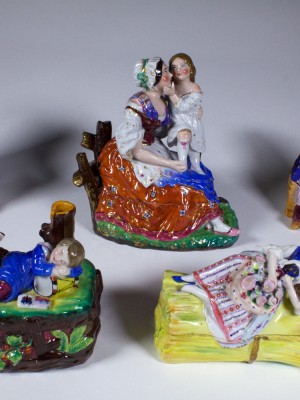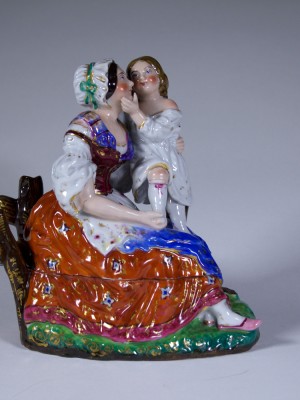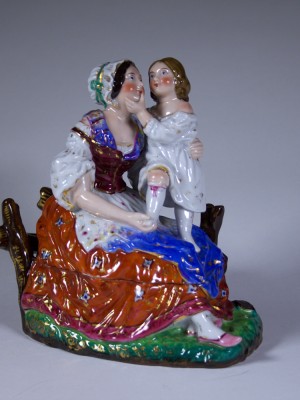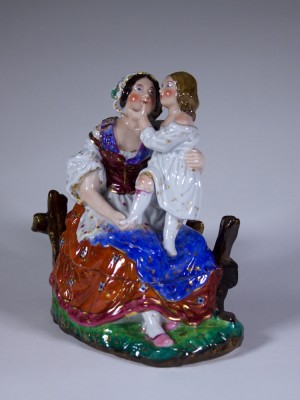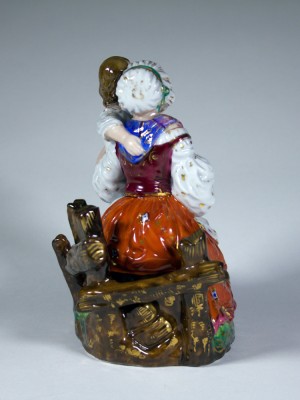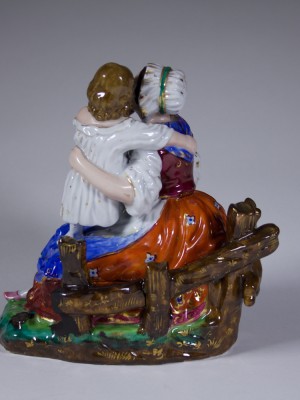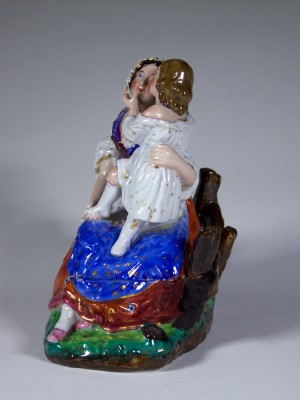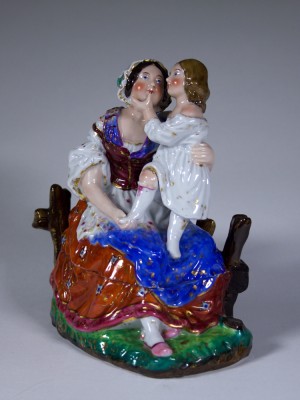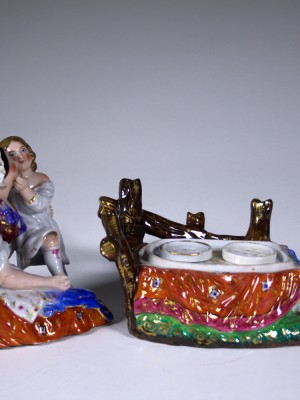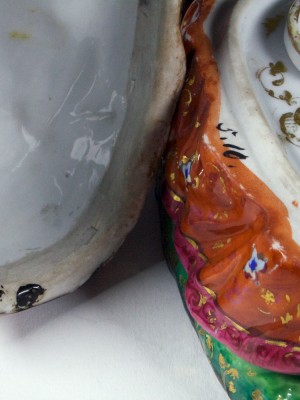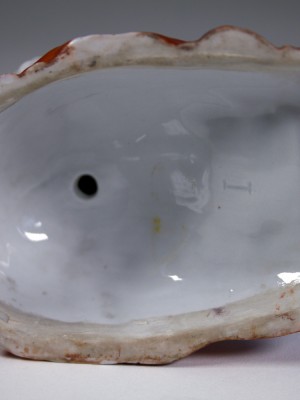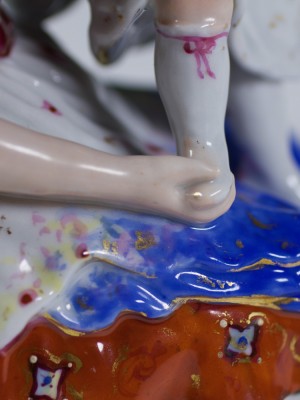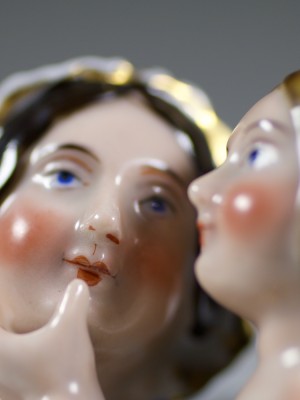This “Woman with Child” is the last of the covered inkwells being added to the Sipiagin or Russian Private Factory Group. It shares the enamel numbering system, colour palette, glaze and body characteristics with most other members of the group (the Old Woman set looks oxidized where the rest look reduced).
There is an incised roman numeral “I” under the lid linking it to the Reaperess which has an “IV” and the Dreaming Boy which has an “II”. The latter two have incised and impressed numbers which this does not. It shares a black enamel 5 with the Old Woman set.
This would have been a very costly item in its day. It was assembled from about twenty one separately moulded parts including the inserts.
The enamel painter expressed the transparent quality of the outermost layer of the skirt in a very effective but simple way. They used the area where the white merges into the blue to reflect the sheer aspect of the fabric. The pale pink and yellow florals transposed from white to blue background convey the sense of transparency.
Not sure if these sanders are original or a marriage of convenience. If they are original, then maybe there is the matching Man with Child out there with both inkwells. It makes no sense for this to have two sanders on its own.
Need to see some marked examples. Maybe in that next book, listing or auction result. Always on the lookout.
It’s funny to me that I didn’t make the connection between these until I saw the enamel numbers on the Old Woman set. I didn’t collect them because of the numbers. I collected them because of the quality and subject matter. These are all the covered inkwells I own. Once I made that first connection, I took another look at the ones I had. Sure enough they were numbered the same way. Sipiagin or not, I seem to like this maker.
17.1 cm in height. Estimated date of 1850 to 1865.

